On 19 August 2020, the world’s largest and longest polar research expedition – known as MOSAiC – reached the North Pole.The MOSAiC Expedition was the first time a modern research icebreaker was able to reach the vicinity of the North Pole all year round, including for the first time during a polar winter.
The purpose of the expedition was to take a close look at the Arctic and study the effects of global climate change.
The expedition was divided into five legs, with teams being changed regularly. A total of 600 people took part in physical operations during the mission, and many more will be involved in the processing of the data gathered.
The icebreaker, Polarstern, returned to her home port of Bremerhaven, Germany, on 12 October 2020. Now, teams of scientists will study the information collected during the expedition, and use it to produce new and more reliable climate projections and models.
Here, we bring you some of our favourite images from the mission.
Check out more of our online galleries:
The Best Science Images of 2020
The first leg
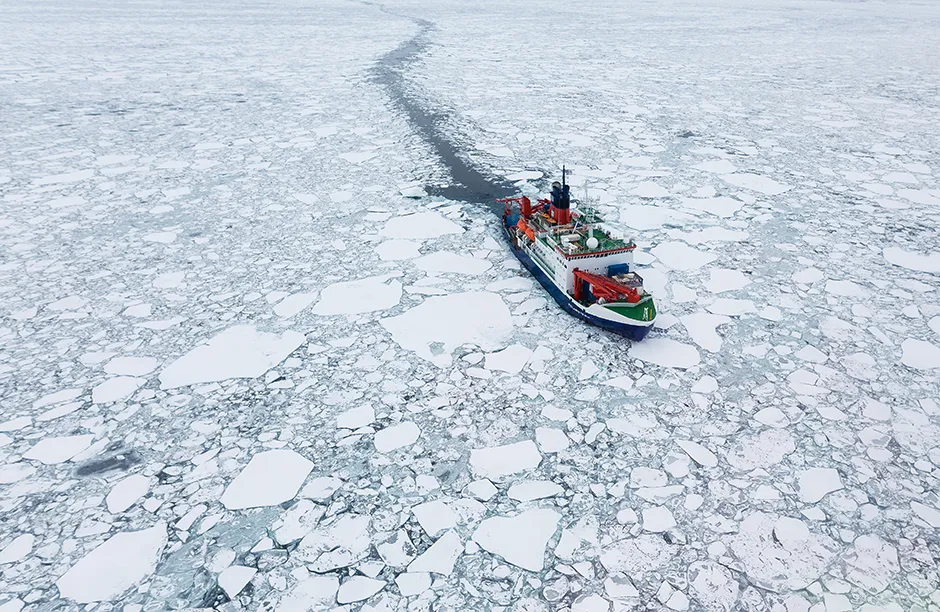
Polarstern breaking through Arctic sea ice on the first leg of its journey from Tromsø, Norway. 28 September 2019
Setting up camp

Setting up power hub and power cables next to Polarstern. 8 October 2019
Friendly visitors
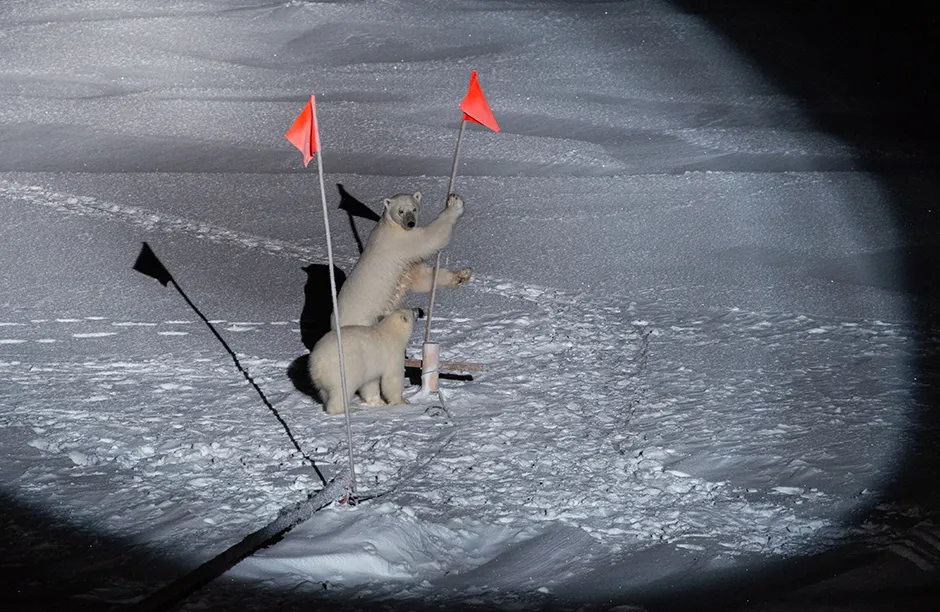
Polar bears visit the ship and surrounding ice camp research site. For safety reasons, team members carry flare guns to scare the bears away and deter them from repeat visits. 10 October 2019
Building a new city
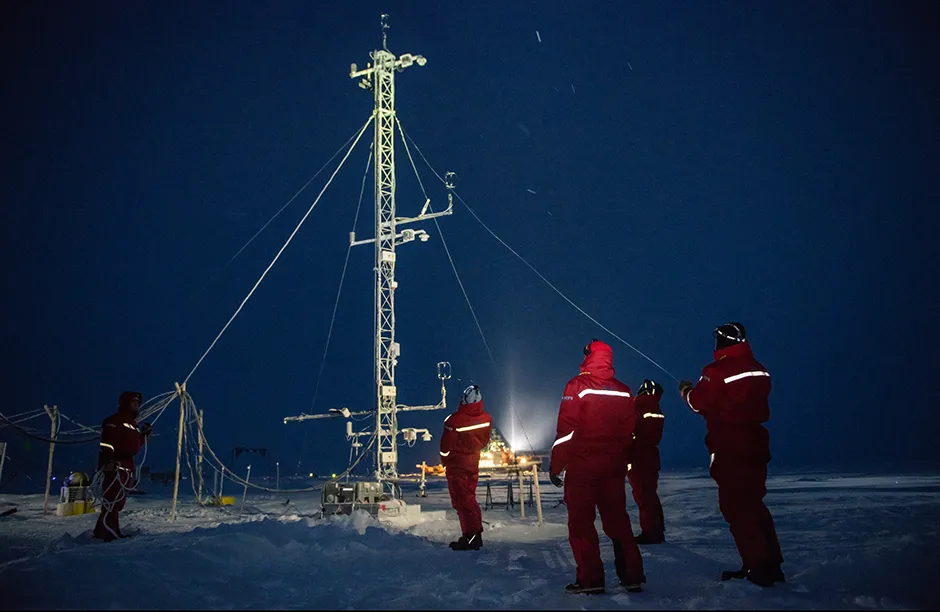
After lots of planning and preparation, the 11-metre-high meteorological tower at Met City was raised. The set up was professionally coordinated and went very smoothly. All instruments mounted on the tower work to provide continuous data.
From the tower, we will get measurements of atmospheric and surface temperature, relative humidity, fast winds, water vapour, pressure, surface flux and CO2.
Additionally, the tower supports an inlet for air samples, snow particle counters and an aerosol size sampler. 24 October 2019
Collecting ice cores
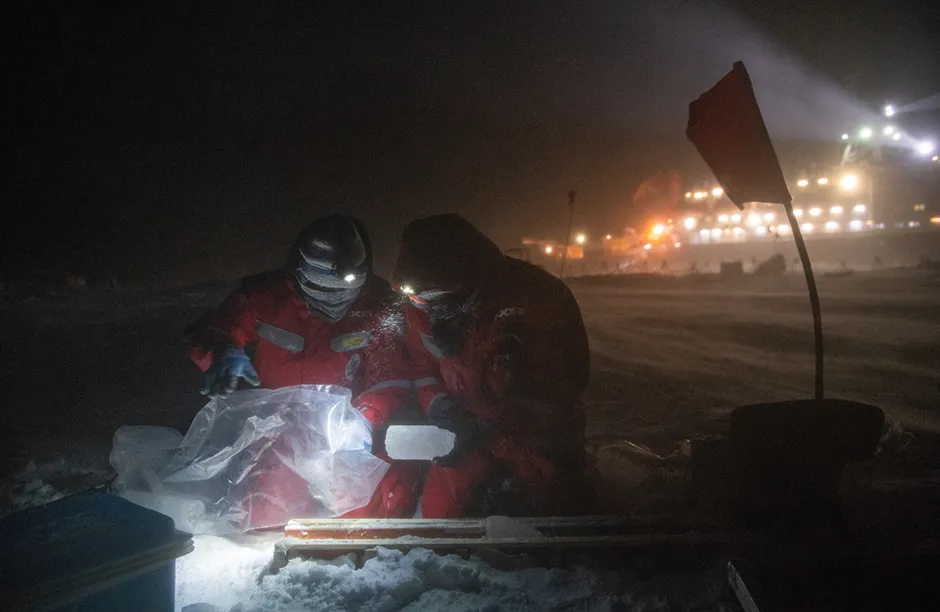
Lei Wang (r) and Michael Angelopolous (l) collect ice cores, which will be melted and measured in the lab of Polarstern. 4 December 2019
Shining beacon

The icebreaking research vessel Polarstern is home and shelter for the MOSAiC scientists and crew. 27 February 2020
Go and tidy your room!

Steven Fons on the work deck of Polarstern, checking his ice core device during Leg 3 of the expedition. 28 March 2020
Going with the floe
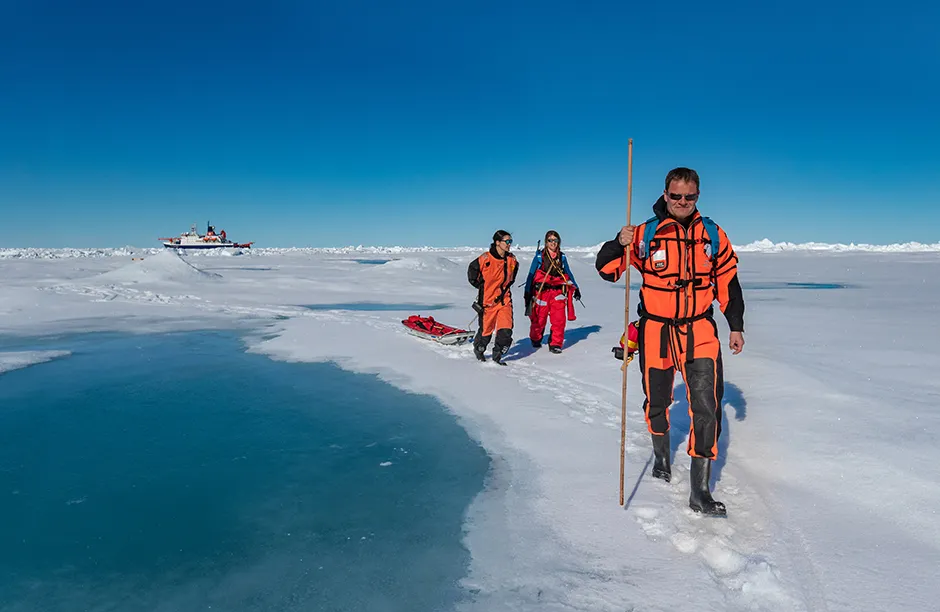
Markus Rex, Allison Fong, and bear guard Laura Christina walk around the old logistics floe area. 30 June 2020
Arctic beauty
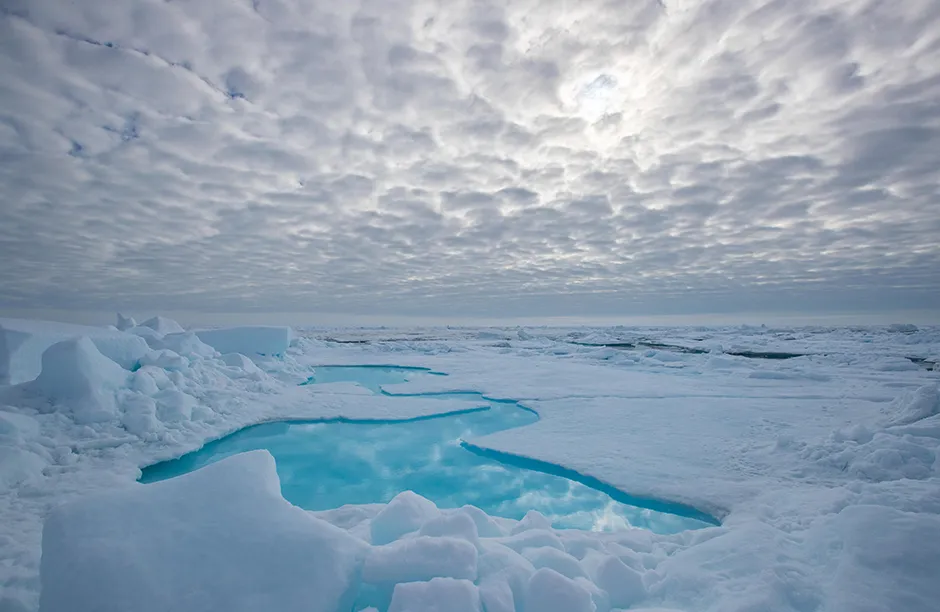
Ice and melt ponds during Leg 4 of MOSAiC. 9 July 2020
A spot of ice fishing

Felix Linhardt measures melt ponds during the MOSAiC expedition Leg 4. 21 July 2020
Easy does it
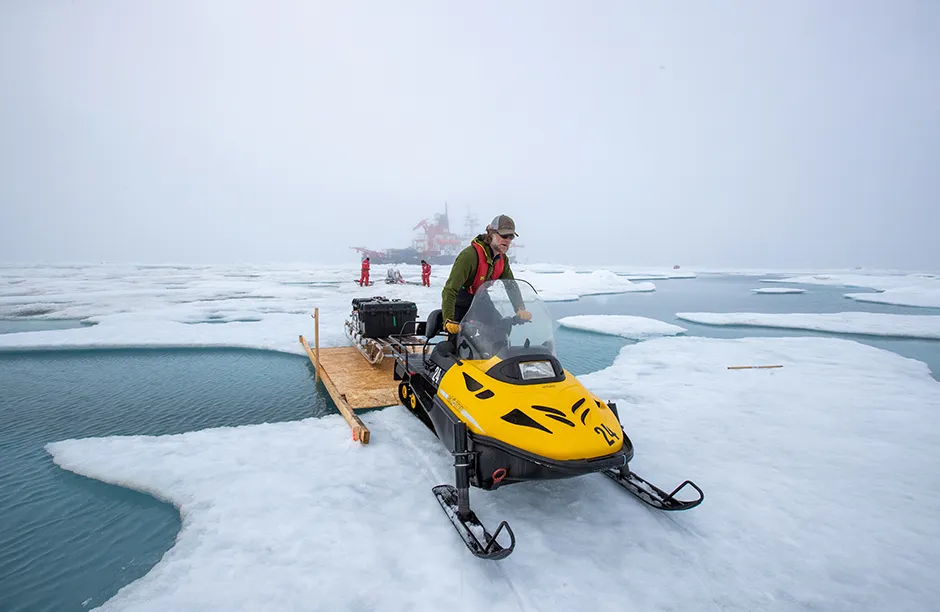
Matt Shupe drives a snowmobile over a bridge towards MET City. 29 July 2020.
Escaping the melting ice
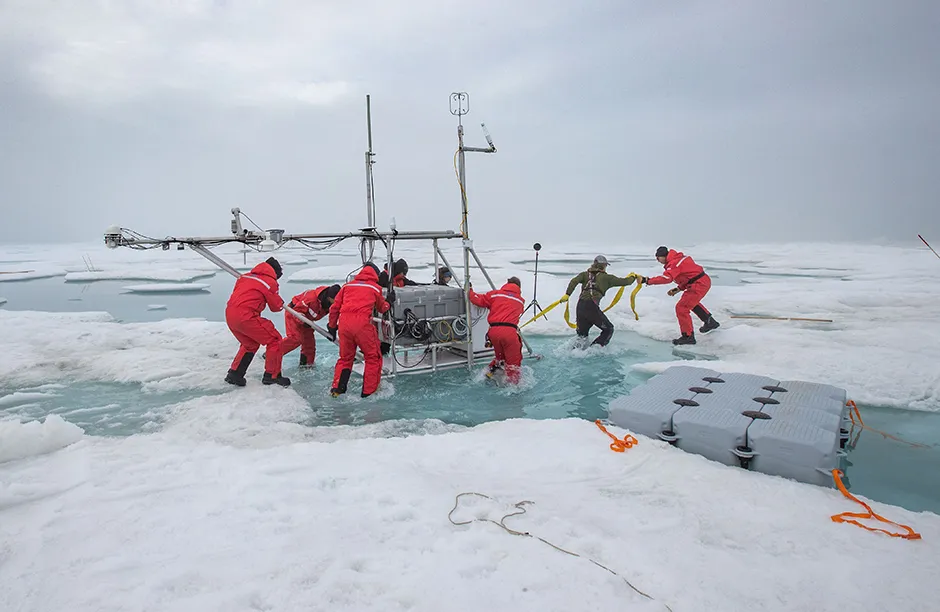
MOSAiC scientists begin to dismantle and move 'Atmos Flux' instruments away from the melting ice. 30 July 2020
Changing of the guard

Marce Nickolas, Ice Team member of Leg 5, looks out at the Russian icebreaker Tryoshnikov as the Polarsternheads North to continue to MOSAiC mission. 13 August 2020
Breaking through

Heading for the new MOSAiC ice floe, Polarstern takes the shortest way to the area of interest: via the North Pole. On the way north, the sea ice is surprisingly weak, and Polarstern is able to easily break it. 17 August 2020
Eye in the sky
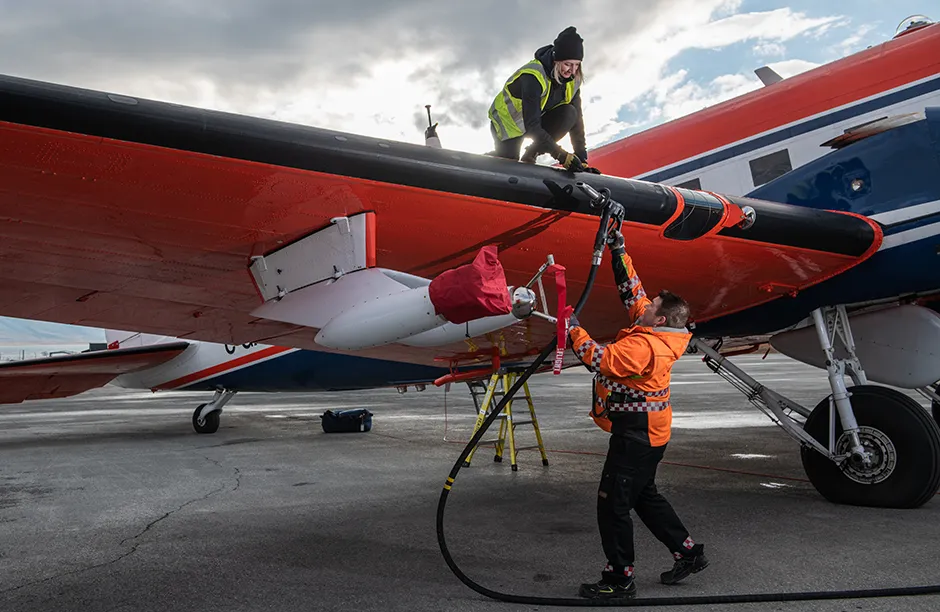
Michelle Anna Lacey, co-pilot of Polar 5 research aircraft fuels the aeroplane before taking off at the airport of Longyearbyen in Svalbard.
Polar 5 took many flights over the central Arctic as part of the MOSAiC mission. Participating atmospheric researchers took readings to better understand how clouds form over the Arctic Ocean, and what part aerosol particles and eddies play in the process. 10 September 2020
Deflating Miss Piggy
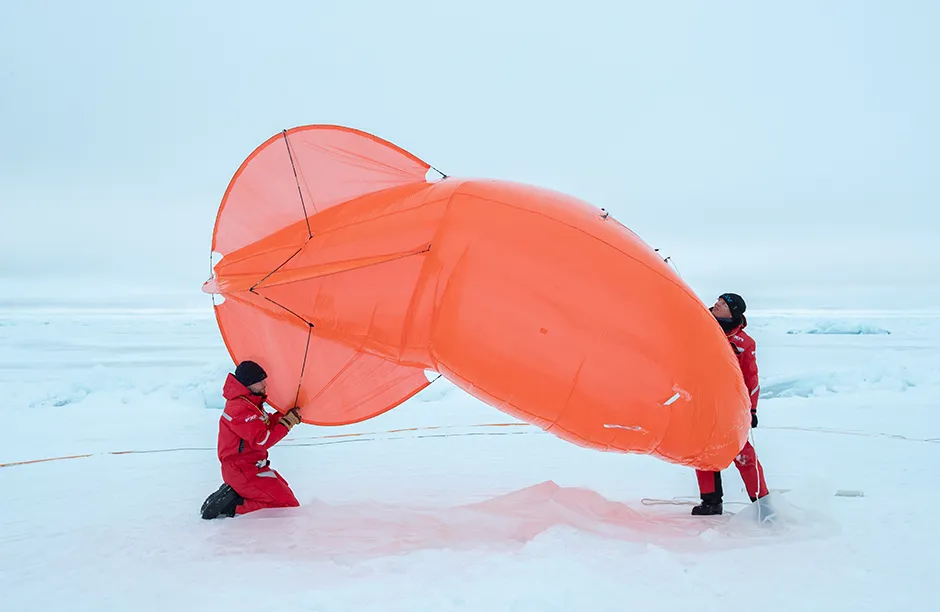
Atmospheric scientists Alex Schulz and Sandro Dahlke deflate Miss Piggy, a weather balloon used to deploy instruments that help the scientists understand atmospheric properties like temperature and turbulence. 17 September 2020
Return to base
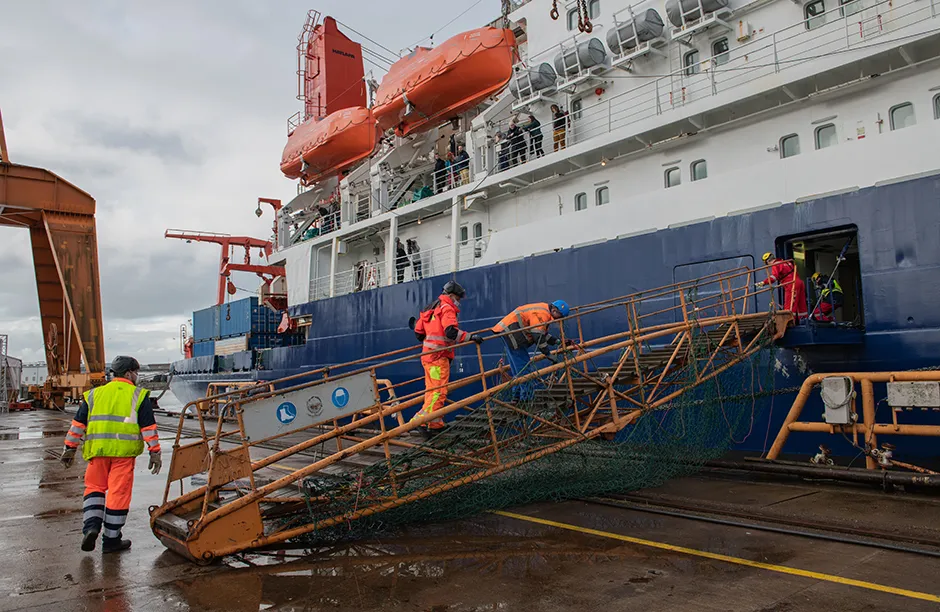
A gangway is being placed next to Polarstern, on its return to port at the end of its year-long mission. 12 October 2020
For more information on the MOSAiC Expedition, check out the homepage at the Alfred Wegener Institute MOSAiC site.